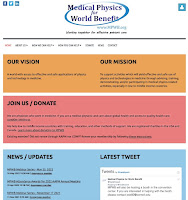 |
| Essential Concepts in MRI, by Yang Xia. |
In the fall of 1994, I became a new assistant professor of physics at Oakland University, in the specialization of medical physics. After receiving my assignment to teach a graduate-level one-semester course in magnetic resonance imaging (MRI) for the next semester, I sat in my nearly empty office and wondered what and how to teach my students…
As I went over [the MRI books available at the time] for a possible adaptation for my course, I could not find any single book that contained what I had in mind as the four essential and inseparable components of MRI—theory, instrumentation, spectroscopy, and imaging… I eventually realized, painfully, that I would have to put together the materials myself… My lecture notes, evolved and revised substantially during the last 26 years, became the basis for this book…
The book is grouped into five parts. Part I introduces the essential comcepts in magnetic resonance, including the use of the classical description and a brief introduction of the quantum mechanical description. It also includes the description for a number of nuclear interactions that are fundamental to magnetic resonance. Part II covers the essential concepts in experimental magnetic resonance, which are common for both NMR spectroscopy and MRI. Part III describes the essential concepts in NMR spectroscopy, which should also be beneficial for MRI researchers. Part IV introduces the essential concepts in MRI. The final part is concerned with the quantitative and creative nature of MRI research…
IPMB covers some of the material in Essential Concepts, particularly that dealing with physics and imaging. Nuclear magnetic resonance spectroscopy is entirely absent in IPMB. I had not seen the material in Essential Concepts about spectroscopy since taking an organic chemistry course while an undergraduate at the University of Kansas, and even then I didn’t understand much of it. IPMB has little to say about instrumentation and I found these sections of Essential Concepts to be among the most useful for me.
Essential Concepts is full of excellent images and illustrations. Some images, such as a high-resolution picture of a pickle, I had seen before on the door to Xia’s laboratory at Oakland University. We both were members of the physics department at OU for over twenty years. In fact, if you look at the acknowledgment section of Essential Concepts, you’ll find my name—along with many others—listed as reading and commenting on a draft of the book. Of course, this was done virtually, as Xia sat in his house and I in mine during the COVID-19 pandemic. This book is one of the few good things that arose from that plague.












